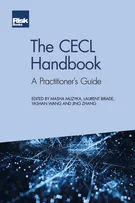Stake-building
Stake-building
Foreword
Introduction
Theory and Practice of Corporate Risk Management
Theory and Practice of Optimal Capital Structure
Introduction to Funding and Capital Structure
How to Obtain a Credit Rating
Refinancing Risk and Optimal Debt Maturity
Optimal Cash Position
Optimal Leverage
Introduction to Interest Rate and Inflation Risks
How to Develop an Interest Rate Risk Management Policy
How to Improve Your Fixed-Floating Mix and Duration
Interest Rates: The Most Efficient Hedging Product
Do You Need Inflation-linked Debt?
Prehedging Interest Rate Risk
Pension Fund Asset and Liability Management
Introduction to Currency Risk
How to Develop Currency Risk Management Policy
Translation or Transaction: Netting Currency Risks
Early Warning Signals
How to Hedge High Carry Currencies
Currency Risk on Covenants
Optimal Currency Composition of Debt 1: Protect Book Value
Optimal Currency Composition of Debt 2: Protect Leverage
Cyclicality of Currencies and Use of Options to Manage Credit Utilisation
Managing the Depegging Risk
Currency Risk in Luxury Goods
Introduction to Credit Risk
Counterparty Risk Methodology
Counterparty Risk Protection
Optimal Deposit Composition
Prehedging Credit Risk
xVA Optimisation
Introduction to M&A-related Risks
Risk Management for M&A
Deal-contingent Hedging
Introduction to Commodity Risk
Managing Commodity-linked Revenues and Currency Risk
Managing Commodity-linked Costs and Currency Risk
Commodity Input and Resulting Currency Risk
Offsetting Carbon Emissions
Introduction to Equity Risk
Hedging Dilution Risk
Hedging Deferred Compensation
Stake-building
The previous two chapters of this part of the book have dealt with the risk on a company’s own shares, either through convertible issuance or through the ESOP. In this chapter, we will consider a situation where one company has exposure to a stock of another company. Substantial holdings of stocks (often called “strategic stakes”) carry with them significant volatility to the stock price, and in many cases the investor may want to reduce that volatility while maintaining some benefits of holding the stake. This risk can be managed through a variety of means, including equity derivatives.
The second novelty in this chapter has to do with the financing of strategic stakes. Since these are by definition of a substantial size, one of the first questions that the investor asks is “How can I pay for the acquisition of this stake?”. If the investor is cash-rich or willing to divest another asset to pay for the strategic stake, there is no problem. However, many investors require external funds in order to acquire the desired strategic stake.
BACKGROUND
Activist Investor Ltd (“AILTD”) is a holding company that would like to acquire a substantial holding of a media company, Mediaco
Copyright Infopro Digital Limited. All rights reserved.
You may share this content using our article tools. Printing this content is for the sole use of the Authorised User (named subscriber), as outlined in our terms and conditions - https://www.infopro-insight.com/terms-conditions/insight-subscriptions/
If you would like to purchase additional rights please email info@risk.net
Copyright Infopro Digital Limited. All rights reserved.
You may share this content using our article tools. Copying this content is for the sole use of the Authorised User (named subscriber), as outlined in our terms and conditions - https://www.infopro-insight.com/terms-conditions/insight-subscriptions/
If you would like to purchase additional rights please email info@risk.net





